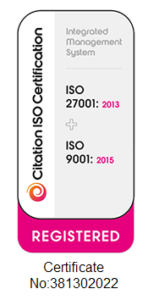Why Virtual Takes Organisations Beyond Their Comfort Zone
“The further you get away from yourself, the more challenging it is. Not to be in your comfort zone is great fun.” ― Benedict Cumberbatch
While more and more organisations have been adopting virtual platforms for internal meetings for several years – Skype, Zoom, Teams, Google Hangouts, GoToMeeting, among others – moving entirely to virtual has forced a change in mindset.
Whether the meeting is internal or external, people have had to learn that virtual is not an optional extra – it’s the only way to engage. And that has led organisations to look at how to create enthusiasm, focus and motivation. Many have had to deploy their skills in different ways and step outside their comfort zones to develop new ways to achieve objectives – be that a sales target, a product launch, an awareness campaign or any other engagement activity.
To help them along that journey, organisations have been turning to an external facilitator to establish that internal focus, rather than relying on a line manager or human resources to get them the results they need. They have looked to partners to help them question and understand the objectives: Why are we meeting? How are we going to achieve a goal? How are we going to get everyone involved? How do we create the enthusiasm we need the team to feel?
For a product manager or sales leader, building that energy through virtual engagement requires a different way of thinking and it may not necessarily be their key strength. So they are looking to external consultants for that expertise.
An even more challenging issue for life sciences companies has been how to build that engagement with their customers – the healthcare providers, patient groups and key opinion leaders. They need help to get in front of their customer, engage them or win a sales call when they can’t go to a doctor’s office or meet with HCPs at exhibition booths.
In this changed environment, staff at non-profits and corporations have had to adapt the skills they have and be willing to move out of their comfort zones in order to develop a different strategy to achieve their objectives.
That is where Open Audience comes in – helping organisations and functions to refocus and go back to basics with simple questions, such as: “What is the purpose of the meeting?” and “What are you wanting to achieve?”
We have been working with a new client that is not only going through the process of adapting to virtual but is also taking on activities they have never done before in any environment. They are developing a branded awareness campaign for a product and have been throwing out ideas on how to engage their intended audience. To stop them from going off on a tangent, we have asked them some key questions: Who is the audience? What message are you seeking to deliver? What are you looking to achieve? While we’re guiding them on a new journey, we are not necessarily reskilling the team, but rather helping them to work out how they can achieve the connection they need in a virtual environment and map a strategy. After all, it’s a bit more daunting when the audience is invisible, and you don’t already have a relationship with them.
We have spoken with clients who have had to try approaches that perhaps didn’t deliver the results they were hoping for, but simply by taking that step into the unknown they are learning, which will help them to evolve their plans.
My advice is to keep trying new approaches because the worst decision is not doing anything.
The companies that have been most successful with their virtual engagement journeys and have achieved what they set out to achieve are those that have been prepared to push boundaries, let down their guards, be a bit experimental and have a bit of fun. That requires senior leadership to allow engaging communication to happen in the virtual space.
Caroline MacKenzie is the operations director at Open Audience, which specialises in making life sciences meetings more engaging with more positive, successful outcomes. The Open Audience team helps to strategise and prepare pre- and post-meeting as well as providing real-time support and guidance during the meeting. Open Audience also offers customisable, multi-lingual engagement platforms that include interactive polling, surveys, and ideas exchange.
Know someone who would find this interesting? Share this article with them!

